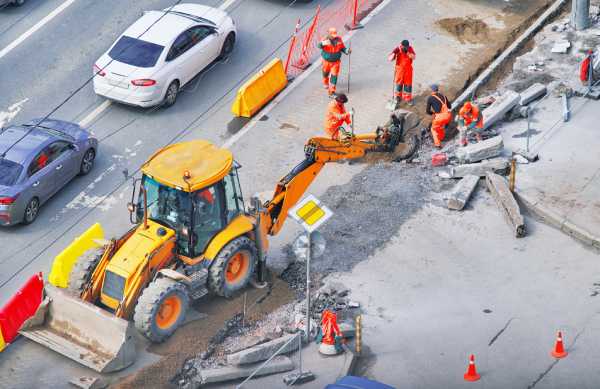Outline
- Safe System Approach Principles
- Safe System Approach Pillars
- THINK Proactive Road Safety
- ACT for Road Safety First
- ADOPT a Proactive Road Safety Method
- Safe System: EVALUATE the Impact
The NHTSA reports that fatal crashes increased by 6.8 percent in 2020 compared to 2019. To significantly decrease this loss of lives, the Safe System approach is a real opportunity to introduce proactive road safety. Incorporating Vision Zero, road infrastructure design, vehicles and people, it’s a holistic manner of addressing road safety, for national and state levels of the Department of Transportation alike. Full implementation requires changing mindsets and behavior, and understanding that driver behavior and near misses play a fundamental role in preventing car crashes. The California DOT Caltrans, for one, has fully embraced this, updating its 2020-2024 Strategic Highway Safety Plan to include the Safe System and align departmental activities with its goals. Indeed, all stakeholders must adjust their outlook and behavior to embrace a preventive road safety method and evaluation of impact. New technology that analyzes driving data, driver behavior and near misses can help.
Safe System Approach Principles
 In the first nine months of 2021, an estimated 31,720 people died in motor vehicle accidents, a 12% increase compared to the previous year. United States Transportation Secretary Steve Buttigieg has declared the road safety situation a crisis.
“We cannot and should not accept these fatalities as simply a part of everyday life in America…The Department’s first ever National Roadway Safety Strategy [identifies] action steps for everyone working to save lives on the road. No one will accomplish this alone. It will take all levels of government, industries, advocates, engineers and communities across the country working together toward the day when family members no longer have to say goodbye to loved ones because of a traffic crash.”
Car crashes happen due to a combination of driving behavior, timing and road context. The Safe System approach is based on a set of general principles that apply to all car crash situations:
Death and serious injuries are unacceptable,
Humans make mistakes,
Humans are vulnerable,
Responsibility is shared,
Safety is proactive,
And redundancy is crucial.
In the first nine months of 2021, an estimated 31,720 people died in motor vehicle accidents, a 12% increase compared to the previous year. United States Transportation Secretary Steve Buttigieg has declared the road safety situation a crisis.
“We cannot and should not accept these fatalities as simply a part of everyday life in America…The Department’s first ever National Roadway Safety Strategy [identifies] action steps for everyone working to save lives on the road. No one will accomplish this alone. It will take all levels of government, industries, advocates, engineers and communities across the country working together toward the day when family members no longer have to say goodbye to loved ones because of a traffic crash.”
Car crashes happen due to a combination of driving behavior, timing and road context. The Safe System approach is based on a set of general principles that apply to all car crash situations:
Death and serious injuries are unacceptable,
Humans make mistakes,
Humans are vulnerable,
Responsibility is shared,
Safety is proactive,
And redundancy is crucial.
Safe System Approach Pillars
Drawing on these principles, Safe System elements are centered around five objectives to increase road safety overall and meet Vision Zero goals.Safer People
All road users need to be encouraged to engage in safe behavior. Wearing seatbelts, driving at safe speeds and not driving drunk all improve safety. Specific actions can be designed to reach and educate different communities.Safer Roads
Roads can become safer by applying Complete Streets policies that always put vulnerable road users first. Context-specific design and layers of protection improve road safety.Safer Vehicles
Vehicles increasingly include technology such as automatic emergency braking and lane departure warnings. Most cars on the road are older and do not benefit from these measures. Cars are also getting bigger, posing greater danger to vulnerable road users.Safer Speeds
For safe speeds to be respected, a number of elements come into play: planning, road design and infrastructure, how speed limits are set, education and enforcement.Post-Crash Care
The focus here is eliminating deaths and serious injury. This is largely influenced by the time it takes to arrive at a car crash scene. Rural and urban locations are impacted differently. But how does a DOT implement Safe System elements? What is required to meet these objectives? There are four essential steps to effect a full change in mindset and behavior, with proactive road safety at the center: THINK, ACT, ADOPT and EVALUATE.THINK Proactive Road Safety
 For all Departments of Transportation, key to the Safe System approach is a paradigm shift in understanding how driver behavior and near misses are fundamental to preventive road safety. The Safe System embeds this outlook in a comprehensive manner, touching on all aspects of the road, all users and all stakeholders. It functions by overlapping layers of prevention and safety. This redundancy in protection is a tactical approach to ensure that near misses don’t become car crashes, car crashes aren’t fatal, and there are fewer car crashes overall.
For all Departments of Transportation, key to the Safe System approach is a paradigm shift in understanding how driver behavior and near misses are fundamental to preventive road safety. The Safe System embeds this outlook in a comprehensive manner, touching on all aspects of the road, all users and all stakeholders. It functions by overlapping layers of prevention and safety. This redundancy in protection is a tactical approach to ensure that near misses don’t become car crashes, car crashes aren’t fatal, and there are fewer car crashes overall.
How does Road Safety become Proactive?
By Incorporating Driver Behavior and Near Misses analysis
Road crash reports provide a certain amount of information after a crash. They help experts improve safety, and are necessary for limiting future car crashes. Near misses happen before car crashes occur, and are just as frequent, if not more so, than crashes themselves. Harsh acceleration, harsh braking, phone handling, excessive speeding are all indications of drivers adapting their behavior to a given context. Understanding these driving behavior and the zones where it’s concentrated make it possible to address potentially risky road zones before a car crash happens.ACT for Road Safety First
When all stakeholders understand that a proactive approach to road safety is possible and they embrace it, the next challenge is to lead by putting road safety first, ahead of all other competing goals and demands. It is the mantra. And today’s technology is the driving force that makes it possible.How do You Analyze Driving Behavior and Spot Near Misses?
Technology Supplies the Insights
 New technology can now harness driving data that represents atypical driving behavior. The behavior can be indicative of a potentially risky event, happening before a car crash a does. The data can then be aggregated and contextualized according to road design, weather, time of day and visibility. Potentially risky road zones are easily and reliably identified. New perspectives to improve road safety for all road users immediately develop.
Machine learning and AI expertise now make it possible to provide these actionable insights about near miss situations. Learning from and acting on them opens truly preventive methods of improving road safety. Efforts are allocated at the right time to the right project, and are continually optimized. Real preventive actions can be made in planning, designing and building roads and infrastructure, educating drivers and enforcement. Road safety underpins the entire process.
New technology can now harness driving data that represents atypical driving behavior. The behavior can be indicative of a potentially risky event, happening before a car crash a does. The data can then be aggregated and contextualized according to road design, weather, time of day and visibility. Potentially risky road zones are easily and reliably identified. New perspectives to improve road safety for all road users immediately develop.
Machine learning and AI expertise now make it possible to provide these actionable insights about near miss situations. Learning from and acting on them opens truly preventive methods of improving road safety. Efforts are allocated at the right time to the right project, and are continually optimized. Real preventive actions can be made in planning, designing and building roads and infrastructure, educating drivers and enforcement. Road safety underpins the entire process.
ADOPT a Proactive Road Safety Method
The Safe System approach doesn’t happen by itself or when ‘zero deaths’ are decreed. It is the result of Departments of Transportation and people working together, making decisions, informing road users and managing operations to turn roads into a safer place. It is fundamentally tied to human behavior in every aspect. Adopting a proactive road safety method happens when values, behaviors, actions and information are shared by all.What is most Difficult in Adopting Preventive Road Safety to achieve Vision Zero goals?
Embracing the New Technology
Preventive road safety therefore requires a complete shift in thinking. A change in mindset to embrace all that innovation and technology are able to provide. Driving data can be captured through many different technologies, such as cameras, sensors, smart phones and more. More importantly, analyzing the driving data produced requires external expertise. Being open and testing innovative programs is necessary. Crash data remains relevant and important. Combining insights from both results in a fully integrated preventive approach to road safety, and a clear plan to develop it and reach Vision Zero goals.Safe System: EVALUATE the Impact
After leading the change to proactive road safety, implementing safer road designs, educating drivers and enforcing new behavior, Departments of Transportation must monitor their actions and evaluate their impact in an effort to engage in sustainable safety.What makes Proactive Road Safety Stronger?
Evaluating Before and After Impact
 Technology provides the ‘before’ picture. Those risky road zones where aggregated and contextualized driving data shows the possibility of future car crashes. Following expert analysis, road planning and design can be enhanced to improve road safety, before car crashes occur. After preventive measures are enacted, the same technology shows – in a matter of weeks or months – the ‘after’: how those actions have made a difference to road safety. Before-and-after analysis delivers critical and valuable lessons as well as key indicators for a successful road safety strategy. Successive iterations lead to less serious injury and fewer deaths.
A full shift in mindset to proactive road safety entails embracing innovative technology solutions. They highlight atypical driving behavior and where it’s located. The insights can be transformed into preventive road safety measures. And that is key to implementing the Safe System approach, and achieving Vision Zero goals.
Technology provides the ‘before’ picture. Those risky road zones where aggregated and contextualized driving data shows the possibility of future car crashes. Following expert analysis, road planning and design can be enhanced to improve road safety, before car crashes occur. After preventive measures are enacted, the same technology shows – in a matter of weeks or months – the ‘after’: how those actions have made a difference to road safety. Before-and-after analysis delivers critical and valuable lessons as well as key indicators for a successful road safety strategy. Successive iterations lead to less serious injury and fewer deaths.
A full shift in mindset to proactive road safety entails embracing innovative technology solutions. They highlight atypical driving behavior and where it’s located. The insights can be transformed into preventive road safety measures. And that is key to implementing the Safe System approach, and achieving Vision Zero goals.

